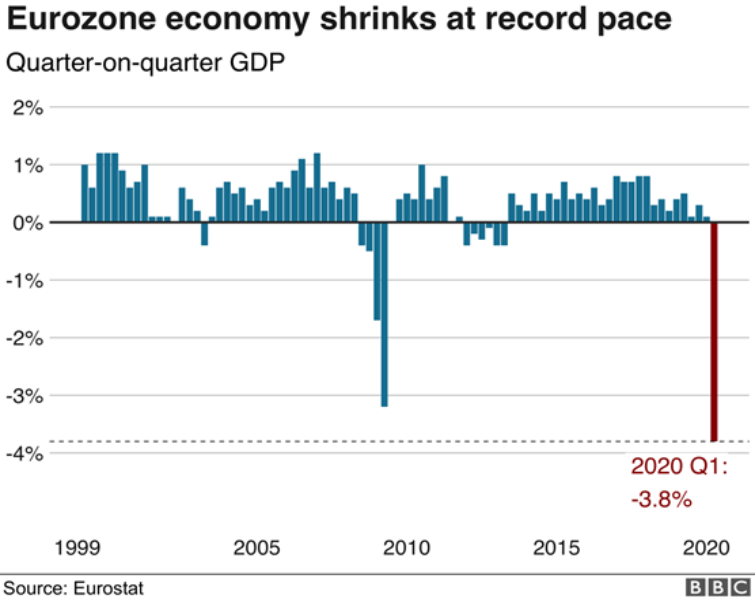Scandinavian welfare states continue to allure leftist onlookers across the world. The Nordic welfare model is marketed as a humane alternative to the cutthroat nature of Western capitalism. It received a massive boost when Vermont senator Bernie Sanders campaigned on emulating these countries in both of his presidential runs during 2016 and 2020. But it’s not just your typical Bernie Bro that’s obsessing over the Nordic model. Technocrats at the Organisation for Economic Co-operation and Development (OECD) insist that inequality is the economic crisis of our time and must be solved through higher taxation and income redistribution. Like good global busybodies, they go out of their way to shame certain countries such as Chile for maintaining relatively low
Topics:
José Niño considers the following as important: 6b) Mises.org, Bernie Sanders, Featured, newsletter
This could be interesting, too:
Nachrichten Ticker - www.finanzen.ch writes Die Performance der Kryptowährungen in KW 9: Das hat sich bei Bitcoin, Ether & Co. getan
Nachrichten Ticker - www.finanzen.ch writes Wer verbirgt sich hinter der Ethereum-Technologie?
Martin Hartmann writes Eine Analyse nach den Lehren von Milton Friedman
Marc Chandler writes March 2025 Monthly
 Scandinavian welfare states continue to allure leftist onlookers across the world. The Nordic welfare model is marketed as a humane alternative to the cutthroat nature of Western capitalism. It received a massive boost when Vermont senator Bernie Sanders campaigned on emulating these countries in both of his presidential runs during 2016 and 2020.
Scandinavian welfare states continue to allure leftist onlookers across the world. The Nordic welfare model is marketed as a humane alternative to the cutthroat nature of Western capitalism. It received a massive boost when Vermont senator Bernie Sanders campaigned on emulating these countries in both of his presidential runs during 2016 and 2020.
But it’s not just your typical Bernie Bro that’s obsessing over the Nordic model. Technocrats at the Organisation for Economic Co-operation and Development (OECD) insist that inequality is the economic crisis of our time and must be solved through higher taxation and income redistribution.
Like good global busybodies, they go out of their way to shame certain countries such as Chile for maintaining relatively low levels of social spending and not making a concerted effort to build a massive welfare state. In its 2018 economic survey of Chile, the OECD recommended that the country pursue measures that “further increase social spending to reduce inequalities.”
In a recent article gushing over the Nordic welfare model, Chilean think tank leader Carlos Huneeus Madge, the director of the Center of Contemporary Reality Studies (CERC), insists that Chile look to Sweden instead of the US for economic inspiration. With resolute conviction, many Nordic welfare state proponents believe that the same results can be replicated in their own countries. As students of economic history, we should question these assumptions though.
Many on the socialist left like to portray countries like Sweden as the embodiment of top-down central planning. Although Scandinavian countries do feature high taxes and high social spending, there still exist strong market institutions, corporate taxes are relatively low, private property is respected, and trade is among the most open in the world.
Regardless of what one thinks about the Scandinavian welfare model in its current iteration, a mandatory prerequisite for it to even function in the first place was a substantial capital stock to tap into. Notably, Sweden was able to build that wealth in a period (1880–1930) when it had a relatively slim state—an inconvenient fact that many welfare boosters omit.
Nima Sanandaji, the author of Scandinavian Unexceptionalism (2015), presents a much more nuanced take on Sweden’s development by drawing on its broader history. Unlike most of western Europe, Sweden did not experience full-blown feudalism, allowing humble farmers to hold private property and escape many of the socioeconomic disparities that serfdom generally bred. It also helped that the country enjoyed high levels of social trust, which mitigated political conflict and allowed a market order to flourish.
Moreover, admirers of Sweden’s welfare model tend to overlook some of the blemishes in its economic history. Economist Per Bylund recounted some of the challenges Sweden faced during the 1970s and 1980s:
The 1970s and 1980s saw a welfare state run amok with a greatly expanded scope with new government benefits, the introduction of very rigid labor market regulations, active propping up of stagnating sectors of the economy, and drastic increases in tax rates with some marginal rates in excess of 100 percent.
Sweden was also not able to escape inflation during this period, which Bylund noted:
Sweden also saw high price inflation, a situation aggravated by repeated devaluations of the currency’s exchange rate to boost exports: in 1976 by 3 percent; in 1977 by 6 percent at first, and then an additional 10 percent; in 1981 by 10 percent, and in 1982 by 16 percent.
The Nordic country quickly learned from this crisis and implemented a series of reforms such as school choice, tax cuts, pension reform, and the abolition of taxes on inheritances and gifts. Not exactly what you would expect from an allegedly “socialist” country. Although the country has some work to do in terms of freeing up certain sectors of the economy, Sweden has still maintained what brought it to the dance—a market-driven economy. Countries like Chile and its Latin American compatriots should take note of that.
As far as inequality in Chile is concerned, the topic is not as black and white as some people make it out to be. In a previous article, I mentioned how Chile’s so-called inequality crisis is exaggerated and sensationalist in nature when placed in the context of other countries in the region. I did concede that there are aspects of public policy that can generate and even perpetuate inequality. Furthermore, there is a larger historical trend characteristic of the region to consider.
The lingering inequality that dots Latin America is a legacy of exclusionary institutions—from protectionist policies that shield corrupt industries from much-needed foreign competition to inefficient judicial systems that protect incumbents at the expense of small businesses.
Multigenerational forms of rent seeking have persisted in Latin America and have had a residual impact on its institutions. Chile was not exempt from this for most of its history, though it broke from the rest of the Latin American pack in certain regards by respecting property rights, taking rational measures on foreign trade, and avoiding some of the wide-scale expropriation policies that have sunk countries such as Cuba and Venezuela.
Say what you want about the Chilean model, it has delivered great results for a country in a region that is not exactly known for its economic stability. Why try to pivot toward another model that may prove to be suboptimal?
If anything, Chile still has some work to do in terms of being a vibrant business hub. Its image has taken somewhat of a hit thanks to the policies it has pursued in the previous decade. Although former president Michelle Bachelet huffed and puffed about changing Chile’s constitution during her administration from 2014 to 2018, she was still able to throw scraps to the rapidly growing Chilean left in the form of tax increases, environmental regulations, and government privileges to politically connected labor groups. Knowing the Left all too well, they weren’t satisfied with these concessions and capitalized on the national protests of 2019 to light the entire country on fire and advance their antimarket narrative.
Current President Sebastián Piñera, a supposed free marketer, floated the idea of a new “social contract” to allay protesters. Piñera’s new social program is comprised of lukewarm compromises to increase the minimum wage, tax hikes on the rich, and more state control over Chile’s pension system. As Piñera will soon find out, none of his reforms will placate the Left, and, more importantly, state intervention will not catapult Chile into halls of riches.
Although Chile could be in worse shape, the last decade has demonstrated its wavering devotion to free market policies. In the case of its business climate, it is heading toward mediocrity. In 2012, it was ranked a decent thirty-third in the World Bank Group’s Doing Business rankings, but by 2020, it had fallen to fifty-seventh place.
In regard to holistic economic freedom, Chile has also slipped in the rankings. In the Heritage Foundation’s Index of Economic Freedom, Chile started out as the seventh most economically free country on the planet in 2012 but was the eighteenth most free in 2019. No matter how the Chilean left and foreign onlookers try to spin it, the country is slowly deviating from what made it the region’s most dynamic success story in the past fifty years.
The main takeaway here is that calls for Chile to just copy and paste the Scandinavian model and expect the same results are naïve at best. They do no justice to the historical particularities of Scandinavian countries. Not only that, but calls to impulsively export the Scandinavian welfare system also overlook what actually made that region prosperous—a strong emphasis on markets. Latin America already has a well-established tradition of easy money and crony capitalist policies. Giving the state more opportunities to dole out money will exacerbate these all too familiar trends.
Although globalization has helped many economies via trade, it has not been so kind when it comes to exporting ideas such as public administration, which the intellectual classes in many developing countries avidly consume. If Chile has to erect any kind of barrier, it’s against many of the West’s wacky economic and cultural policy prescriptions. Assuming that it has to look elsewhere for policy inspiration, countries like Singapore may actually offer Chile a more practical guide for building strong institutions that enhance economic growth concurrently with rock-solid social cohesion.
Tags: Bernie Sanders,Featured,newsletter








